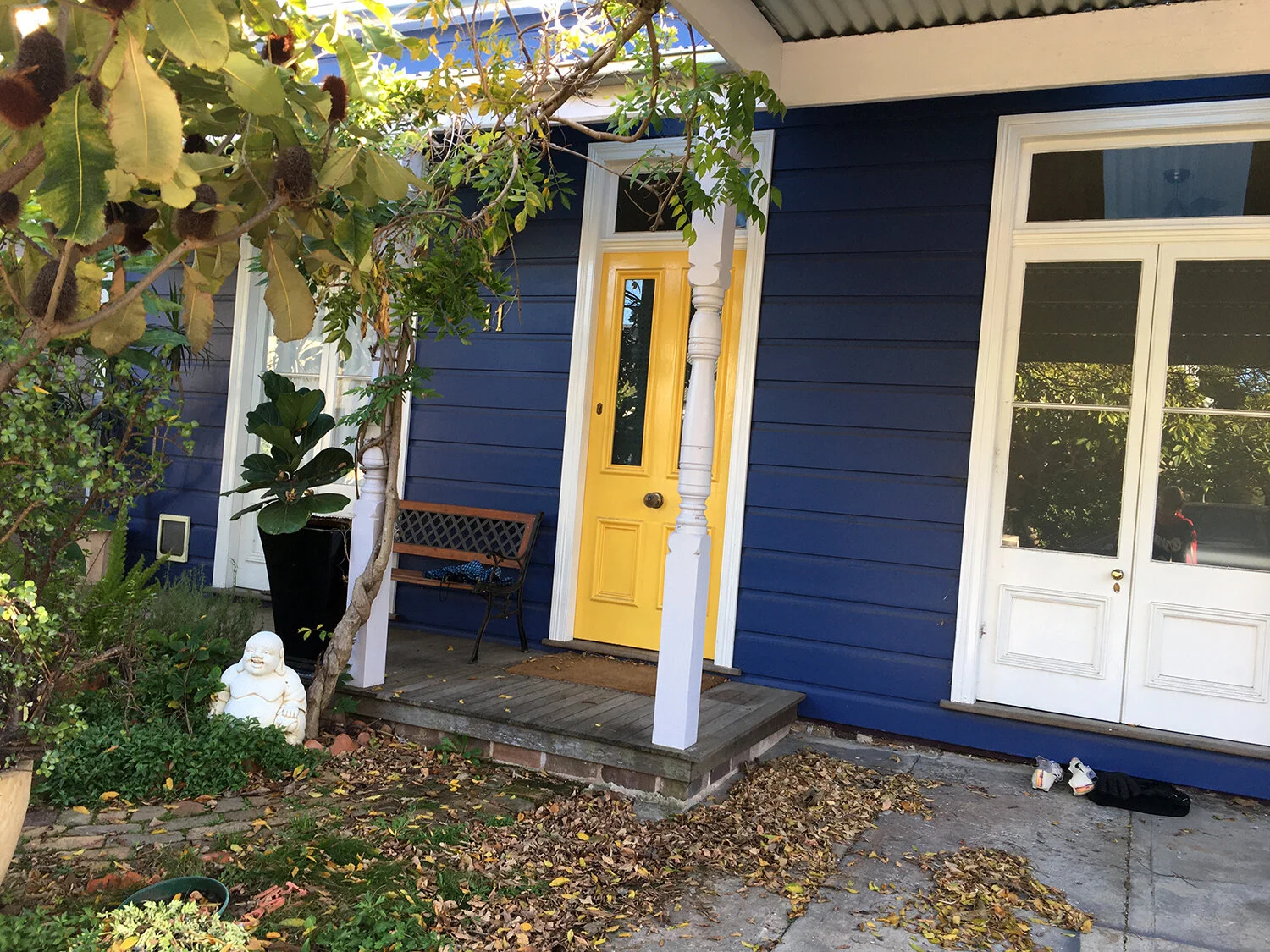In Louisa Street, a cat with a bushy tail tries to open a parcel that was left on the porch. At the corner to Helena Street is a suburban dream house, built from sandstone with three curved balconies held up by four round pillars and a fleur-de-lys fence around it. Over the front door is a horseshoe for good luck, which may be needed as one of the marble tiles decorating a balcony just above the entrance has come off. The places here have many chairs around big tables in their backyards. Near a playground is a sign saying “Warning - Area Under Surveillance”. It immediately makes me feel worried. In these times of the Coronavirus, we have become insecure about what is allowed and what is not. Can I walk here, can I be here? But it’s not that. It’s about illegal dumping.
At the corner of Marion Street is the Arafah Market, not a market but just a small store. I look up what Arafah means and find it is an Islamic holiday and by coincidence falls this year on the very day I am here, the 29th of July. Further down Marion Street, I see a small old caravan of the type street vendors would use, painted bright green with rusty patches. There is a small window at the front which opens as a counter. Behind the caravan, lions are guarding the wall of a family house. Some homes have quite large properties around them. Near Beatrice Street, a sign offers ‘LIFESIZE PLANS’. The surface is cracked. Around a bent are the railway tracks and beyond is the big mosque with its minaret and domes. The view from this side is obscured by the powerlines and railway structures.
In Alice Street are more ornamented fences, outdoor lamps and fancy letterboxes and a house with large oriental-looking arches. On a property nearby is an army of traffic cones, spades sitting in wooden barrels, piles of rocks, garden gnomes, toddler-sized cars, and wilted leeks stuck into pots. Several ‘No Entry’ and CCTV signs tell you to back off.
I look down Lily Street and decide not to go there. But I drive along Mary Street which ends at a park and a football oval. A group of ibises are picking at a discarded food box. Mary Street has an old corner store at Cumberland Road. On the other end, the street finishes at the town centre. But by the time I arrive in that section, there is too much traffic to go near it.
I drive down Mona Street. It's very long and very busy. I can’t find anywhere to park my car to get out and walk along. I pass a sign to the next suburb, Granville, which acknowledges that it is the land of the Dharug people. There is nowhere to turn until I come to a T section and turn right, hoping to cut back through one of the side streets, but they are all dead-ends. Later I find out that the Duck River runs along the end of these streets. I finally turn into one of them. By coincidence, it is a street with a female name: Myrtle in Granville. At the corner is a barber shop of the new trendy kind, using the traditional blue, white and red striped barber sign painted in shiny colours. Two young men are outside smoking. One has a complicated plaited hairstyle. When I am back near the Auburn town centre, it’s the end of school time. I am stuck at a roundabout with a school at the corner. Flashing neon letters tell everyone: “Be cool, go to school.” Many women are wearing headscarves and fashionable clothes, picking up their children.






























































































